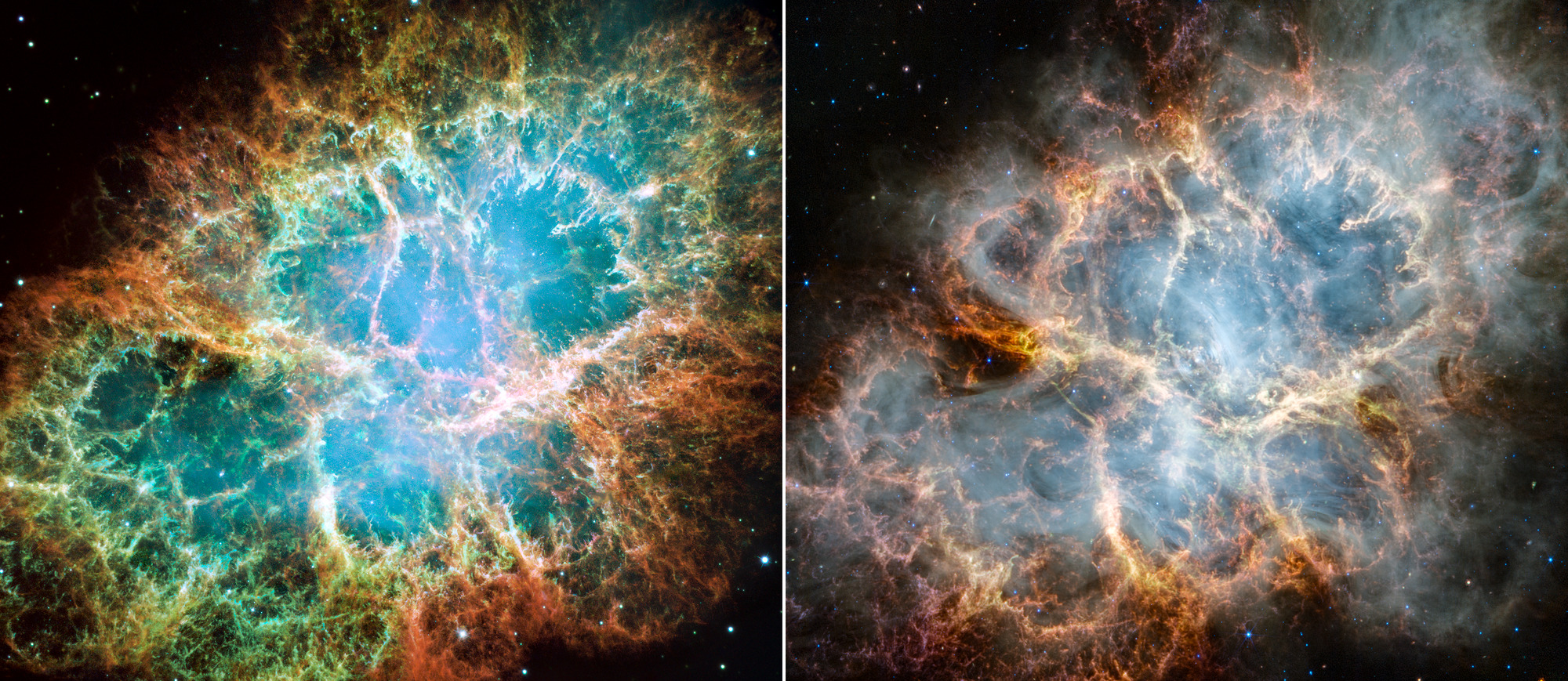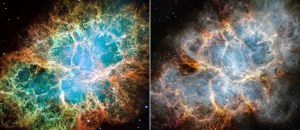
Hubble and Webb Image the Crab Nebula
A side-by-side comparison of the Crab Nebula as seen by NASA's Hubble Space Telescope in optical light (left) and NASA's James Webb Space Telescope in infrared light (right). The Hubble image was released in 2005, while astronomers have recently used Webb’s NIRCam (Near-Infrared Camera) and MIRI (Mid-Infrared Instrument) to reveal new details of the Crab Nebula. In the Hubble image, orange filaments consisting mostly of hydrogen form a crisp, cage-like exterior shell. Blue mottled filaments toward the outer part of the Crab contain neutral oxygen, while singly-ionized sulfur and doubly-ionized sulfur form fluffy red and green material. The bright glow in the interior’s center highlights the nebula’s pulsar, a rapidly rotating neutron star. Similar to the Hubble optical image, Webb’s infrared capabilities show the supernova remnant’s crisp, cage-like structure of fluffy red-orange filaments of gas that trace doubly ionized sulfur. Among the remnant’s interior, yellow-white and green fluffy ridges form large-scale loop-like structures, which represent areas where dust particles reside. The central area within is comprised of translucent, milky material. This white material is synchrotron radiation, which is emitted across the electromagnetic spectrum but becomes particularly vibrant thanks to Webb’s sensitivity and spatial resolution. It is generated by particles accelerated to extremely high speeds as they wind around magnetic field lines. In the center of this ring-like structure is a bright white dot: the nebula’s pulsar. Note how certain gas filaments are bluer in color. These areas contain singly ionized iron. By studying Webb data and consulting previous observations of the remnant taken by other telescopes, like Hubble, astronomers can improve their understanding of the Crab Nebula as well as broaden their knowledge on the life and death of stars.
- X

























